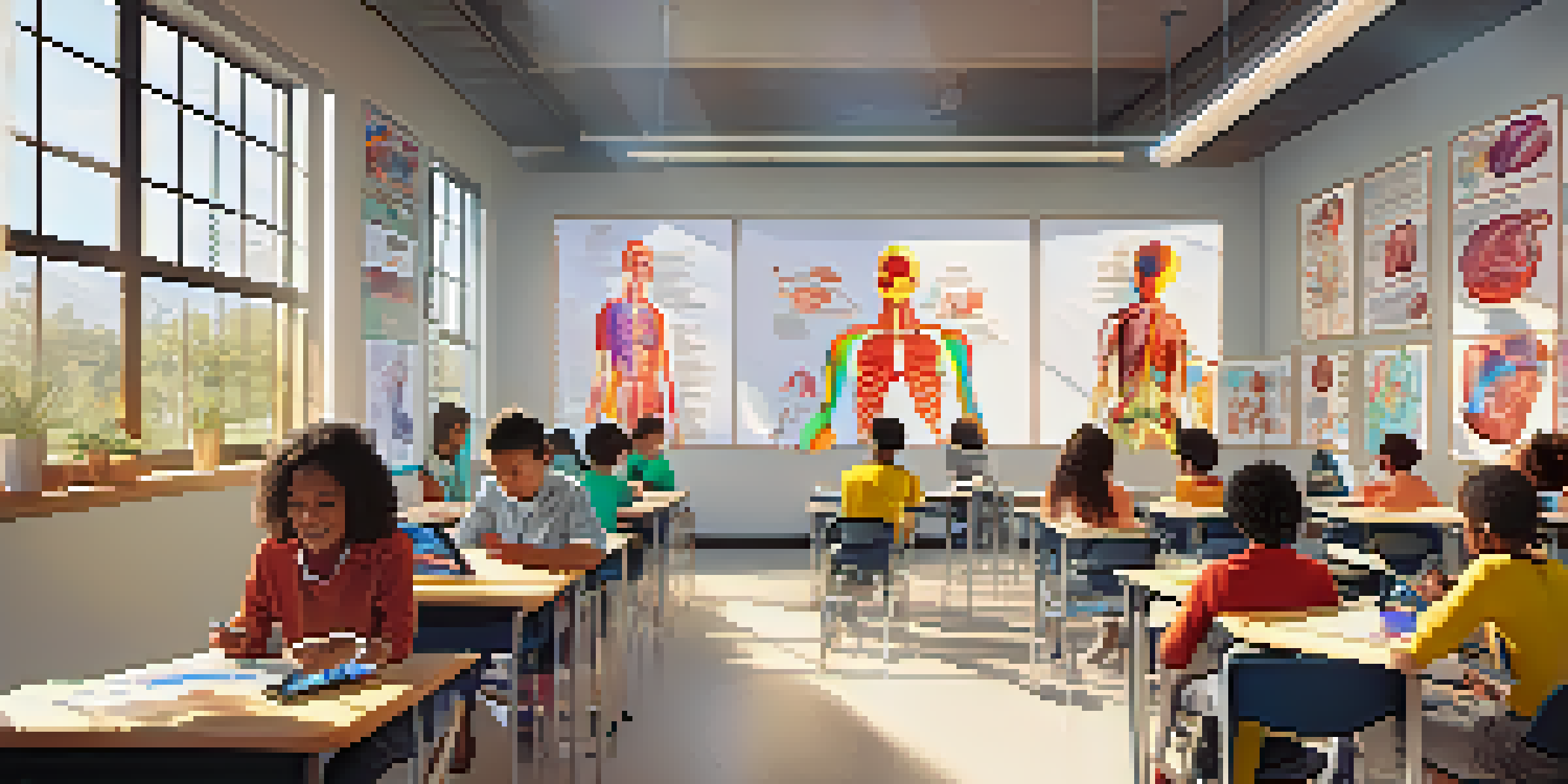The Benefits of Integrating AR into Learning Management Systems

Understanding Augmented Reality in Education
Augmented Reality (AR) is a technology that overlays digital information onto the real world, enhancing our perception of our surroundings. In the context of education, AR provides interactive and immersive experiences that can significantly improve learning outcomes. Imagine students being able to visualize complex scientific concepts right in their classroom; that's the power of AR.
Augmented Reality is not just a technology; it’s a new way of seeing the world and enhancing our understanding of it.
This technology bridges the gap between theoretical learning and practical application. For instance, a biology student can explore the human anatomy in 3D, making it easier to grasp intricate details that textbooks might not convey effectively. By integrating AR into Learning Management Systems (LMS), educators can create an engaging and dynamic learning environment.
Furthermore, AR can cater to different learning styles—whether visual, auditory, or kinesthetic—ensuring that every student has an opportunity to thrive. As educators embrace this innovative approach, the traditional barriers to learning can be dismantled, paving the way for a more inclusive educational landscape.
Enhancing Engagement Through Interactive Learning
One of the standout benefits of AR in LMS is its ability to capture students' attention in a way that traditional methods often fail to do. When learners are actively participating in their education—such as interacting with a virtual model—they are more likely to retain information. This hands-on approach transforms passive learning into an engaging experience.

Consider a history lesson where students can virtually visit ancient civilizations. Instead of simply reading about the past, they can explore 3D models of historical sites, making the experience much more memorable. This level of engagement not only fosters curiosity but also encourages students to take ownership of their learning journey.
AR Enhances Engagement in Learning
Augmented Reality transforms traditional education by creating interactive experiences that captivate students' attention and improve information retention.
Moreover, AR can facilitate group projects and collaborative learning experiences. When students work together in an augmented environment, they can share insights and ideas more effectively, enhancing teamwork skills that are crucial in today’s world.
Breaking Down Geographical Barriers to Learning
In a globalized world, education should not be limited by geography. AR solutions can transcend traditional classroom boundaries, allowing students from different locations to learn together as if they were in the same room. This is particularly beneficial for remote areas where access to quality education might be restricted.
The future of education lies in how well we can integrate technology into our learning environments to foster collaboration and creativity.
For instance, students in rural communities can participate in virtual field trips alongside their urban peers, exploring landmarks and museums without ever leaving their homes. This democratizes education, ensuring that every learner has access to the same resources and experiences.
By incorporating AR into LMS, institutions can offer a more diverse range of courses and resources that cater to a wider audience. This flexibility not only enhances learning opportunities but also prepares students for a more interconnected world.
Supporting Diverse Learning Needs with AR
Every student has unique learning needs, and AR can be a powerful tool to address these differences. By providing personalized experiences, educators can adjust the content and complexity based on each learner's abilities. This adaptability is vital in a classroom where students may be at various learning stages.
For example, a student struggling with mathematical concepts can use AR to visualize problems in a 3D format, breaking down complex ideas into manageable parts. This tailored approach not only helps in comprehension but also boosts confidence, allowing learners to progress at their own pace.
AR Breaks Geographic Barriers
By utilizing AR, students from different locations can learn together, ensuring equal access to educational resources and experiences.
Additionally, AR can assist students with disabilities by offering alternative ways to access information. Whether through auditory support for the visually impaired or interactive simulations for those with cognitive challenges, AR opens doors that were previously closed in traditional learning environments.
Boosting Retention Rates with Immersive Experiences
Retention is often a significant challenge in education, but AR can turn the tide by creating memorable learning experiences. By engaging multiple senses and providing visual context, learners are more likely to remember what they've studied. This immersive quality of AR makes information stick.
For instance, a chemistry student might mix virtual chemicals in a safe environment, allowing them to see reactions unfold in real-time. This hands-on experience not only reinforces theoretical knowledge but also helps students associate learning with fun and exploration.
When students are excited about what they are learning, they are less likely to forget it. As a result, incorporating AR into LMS not only enhances understanding but also contributes to long-term retention, which is essential for academic success.
Fostering Collaboration Through Shared AR Experiences
Collaboration is at the heart of effective learning, and AR provides a unique platform to foster teamwork among students. With shared AR experiences, learners can work together on projects from different locations, breaking down the barriers that typically hinder collaboration. This not only enhances learning but also builds essential social skills.
Imagine a group of students from different countries collaborating on a virtual science project using AR. They can visualize data, conduct experiments, and discuss findings in real-time, creating a rich, interactive environment. This kind of collaborative learning nurtures critical thinking and problem-solving abilities.
AR Supports Diverse Learning Needs
Augmented Reality offers personalized learning experiences, adapting content to meet the unique needs of each student, including those with disabilities.
Incorporating AR into LMS promotes a culture of cooperation where students learn from one another, share diverse perspectives, and build friendships that extend beyond the classroom. Such experiences are invaluable for personal and professional growth.
Preparing Students for a Tech-Driven Future
As technology continues to evolve, preparing students for the future is more critical than ever. Integrating AR into LMS not only enhances learning but also equips students with essential skills for a tech-driven world. Familiarity with AR technologies can give learners a competitive edge in their future careers.
For instance, industries such as healthcare, engineering, and design are increasingly adopting AR for training and development. By exposing students to these tools early on, educators can help them become proficient in technologies that will be integral to their professional lives.

Furthermore, AR promotes creativity and innovation, encouraging students to think outside the box. As they engage with this technology, they are likely to develop a mindset that embraces change and adapts to new challenges—an essential trait in today’s fast-paced job market.